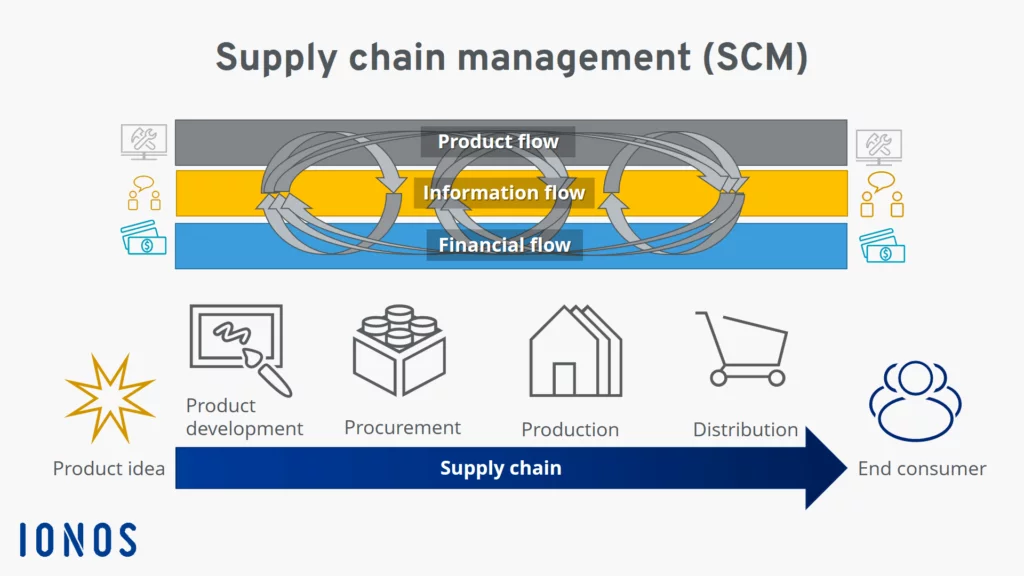Supply chains have evolved into intricate networks. Major corporations, such as Walmart, now manage over 100,000 suppliers, while even smaller businesses might engage with numerous partners. Building a transparent supply chain demands substantial effort and a meticulous approach, but it’s increasingly vital as ESG (Environmental, Social, and Governance) standards become the norm.
Within this intricate web of trade, stakeholders—consumers, NGOs, and governments—are pressing for greater visibility into the origins of goods and, notably, the production methods behind them.
For e-commerce enterprises, managing orders within a decentralized supplier network is common.
A transparent supply chain involves two primary elements: firstly, evaluating and examining suppliers and their methodologies, and secondly, disseminating this information internally and externally.
There are varied perspectives on what transparency entails, often associated with traceability and disclosure.

Companies driven by ethical considerations are increasingly revealing the inner workings of their supply chains, openly disclosing the sources and methods involved in procuring their supplies and materials.
Patagonia stands as an early advocate of supply chain transparency. Back in 2005, the outdoor apparel company began actively seeking wool suppliers that upheld animal welfare and avoided substantial environmental harm.
By 2012, Patagonia had established the Responsible Wool Standard, ensuring ethical treatment of sheep providing wool and implementing traceability measures. The company also showcased its commitment to continuous improvement by severing ties with a long-term supplier upon uncovering their engagement in harmful practices.
These steps have cemented Patagonia’s reputation as a beacon of environmentally and socially responsible business practices. The brand has garnered a dedicated following of conscientious and fashion-forward customers.
Why Consider Supply Chain Metrics:

- Performance Evaluation: Metrics and measurements provide a quantitative assessment of the supply chain’s efficiency and effectiveness. Key Performance Indicators (KPIs) like order cycle time, inventory turnover, on-time delivery rates, and fill rates offer insights into how well the supply chain is operating.
- Cost Management: Detailed measurements enable businesses to analyze costs associated with various aspects of the supply chain. This includes procurement, transportation, inventory holding, and warehousing costs. Identifying cost drivers and areas of inefficiency helps in optimizing spending and reducing overall operational expenses.
- Risk Mitigation: Measuring and tracking supply chain metrics allow companies to identify vulnerabilities and potential risks. Whether it’s supplier reliability, transportation delays, or inventory shortages, having metrics in place helps in foreseeing potential disruptions and devising strategies to mitigate these risks.
- Customer Satisfaction: Accurate and timely deliveries, along with smooth supply chain operations, directly impact customer satisfaction. Metrics help in evaluating service levels, order accuracy, and fulfillment rates, ensuring that customer demands are met efficiently.
- Continuous Improvement: Measurements serve as benchmarks for ongoing improvement initiatives. They help in setting realistic goals, tracking progress, and identifying areas for enhancement within the supply chain processes. Regularly evaluating these metrics aids in driving continuous improvement and operational excellence.
Best Practices for Supply Chain Management:
1. Enhance and Unify Your System Infrastructure

To streamline your ecommerce order fulfillment, upgrading your system infrastructure is essential. The choice of tools, plugins, and software will depend on your business’s scale and needs.
For larger enterprises, implementing comprehensive ERP (Enterprise Resource Planning) software can offer a unified view of the entire order lifecycle. These systems integrate various processes and provide real-time insights across departments. For instance, Amazon utilizes an ERP system to manage its extensive supply chain and logistics, ensuring seamless order processing from warehouses to customers’ doorsteps.
Smaller startups can benefit significantly from integrating robust order management software. Platforms like ShipStation or Ordoro offer user-friendly interfaces, allowing efficient order processing and seamless integration with major ecommerce platforms like WooCommerce or Magento. These tools streamline inventory management, shipping, and order fulfillment processes, providing startups with the tools needed to scale their operations effectively.
When selecting tools, consider ones that integrate seamlessly with your existing systems. Plugins such as OrderMetrics or Inventory Planner can help track sales metrics and optimize inventory, ensuring you’re investing in software that complements your business’s growth trajectory.
2. Enhance Customer Order Visibility

Customers value transparency regarding their orders, and any lack of clarity in shipment status can lead to frustration. Whether it’s a delayed delivery or an international shipment held in customs, customers seek explanations and updates.
To ensure seamless order tracking and customer satisfaction, consider leveraging order management systems with integrated tracking features. Tools like Shippo or AfterShip sync with various shipping carriers, providing real-time tracking information accessible to both customer service agents and customers.
Additionally, implementing systems that automate updates via emails, SMS, or dedicated apps can significantly improve customer experience. A prime example is the global logistics company DHL, which utilizes a robust tracking system, notifying customers at every stage of the delivery process, ensuring transparency and proactive communication.
This small yet impactful change in offering real-time updates enhances customer service, boosting overall satisfaction and trust in your brand.
3. Enhance Shipping Speed

Meeting customer expectations for rapid shipping times, especially with the prominence of next-day or same-day delivery options, significantly influences purchase decisions. To achieve faster delivery, partnering with warehouses or third-party logistics firms (3PL) operating in multiple locations is key. By dispersing inventory closer to your customer base, you expedite delivery times.
Amazon FBA (Fulfillment by Amazon) offers an alternative solution, granting access to their expansive fulfillment network and a vast customer base of over 300 million users. Leveraging their infrastructure often streamlines delivery processes and enhances speed, meeting customer demands for prompt shipping.
Services like ShipBob or Red Stag Fulfillment offer multi-location warehousing and efficient logistics solutions, aiding in reducing overall shipping times.
4. Optimize Warehouse Management

The efficiency of your warehouse operations significantly impacts customer satisfaction. The warehouse team plays a pivotal role in picking, packing, and facilitating delivery. Effective inventory tracking, especially with diverse stock keeping units (SKUs), is crucial to avoid delays and ensure timely order fulfillment.
Choosing warehouses with integrated fulfillment systems is essential. Seamless integration enables real-time order tracking, troubleshooting, and timely resolution of any delivery hiccups. Storing inventory across multiple locations further minimizes shipping durations, catering to varying customer locales.
E-commerce giant Shopify incorporates various fulfillment partners and third-party logistics firms to optimize warehouse management, ensuring efficient order processing and timely deliveries across a wide customer base.
5. Optimize Inventory Levels Using Data

Maintaining an ideal inventory balance not only saves costs but also significantly improves order fulfillment. A seamlessly integrated inventory management system synced with your order management system allows for real-time updates on stock availability, ensuring accurate and timely information for customers. By leveraging location-specific inventory data, you can provide precise shipping estimates, enhancing customer confidence in delivery timeframes.
Inventory management software like TradeGecko or Zoho Inventory offers comprehensive solutions for tracking and managing inventory levels across various locations, aiding in accurate order fulfillment and customer satisfaction.
The clothing brand ASOS utilizes a sophisticated inventory management system that synchronizes stock levels across multiple warehouses worldwide. This real-time synchronization enables precise stock information, allowing customers to receive accurate availability updates and estimated delivery times.
6. Measure and Improve Performance

Even with what seems like an optimal fulfillment system, continuous monitoring and improvement are essential to meet customer expectations. Tracking key performance indicators (KPIs) such as average shipping time, on-time delivery percentage, return rates, reasons for returns, and order accuracy are crucial metrics.
Analyzing these KPIs provides insights into areas that may require improvement. This data-driven approach helps in cost-effective supply chain management while boosting customer satisfaction.
Amazon meticulously tracks and analyzes a plethora of performance metrics within its fulfillment centers, constantly striving for efficiency improvements. By maintaining high delivery accuracy and optimizing shipping times, Amazon not only enhances customer satisfaction but also utilizes these achievements as a marketing strategy, promoting next-day or same-day delivery options to customers.
Learn about checkout process optimization here.
7. Streamline Customer Returns

Offering free returns can significantly boost purchase likelihood, albeit with an increased return rate. To effectively manage returns and enhance the process, consider the following strategies:
Returns management software such as Returnly or Happy Returns automates and streamlines the return process, ensuring clear policies, easy instructions, and label provision for customers. Integration with your e-commerce platform and order management system ensures smooth handling of returns.
Zappos, an online shoe and clothing retailer, built its brand around hassle-free returns. They provide a simple returns process, with pre-paid labels and a generous return window, boosting customer confidence in their purchasing decisions.
8. Optimize Shipping Partnerships

Choosing the right shipping companies significantly impacts delivery speed, costs, and customer satisfaction. Seamless integration with your order and warehouse management systems is crucial for efficient order handling and customer communication.
Platforms like ShipStation or Shippo offer integrations with various carriers, allowing you to compare shipping rates and manage orders across multiple carriers from one dashboard. These tools streamline the shipping process, providing customers with real-time tracking and reliable delivery estimates.
Etsy, the global marketplace for unique and creative goods, partners with various shipping carriers to offer flexible shipping options to sellers. Etsy’s integration with multiple carriers ensures that sellers can select the best shipping partner based on their needs and optimize shipping costs.
By integrating streamlined returns management software and selecting the right shipping partners, businesses can not only enhance customer satisfaction but also streamline operations, leading to increased efficiency and reduced shipping costs.
Conclusion:
Effective supply chain management stands as a cornerstone for achieving success. By incorporating robust strategies and adhering to best practices, businesses can attain streamlined operations, optimize inventory management, and elevate overall customer satisfaction. As the e-commerce landscape continues its evolution, prioritizing agility, seamless integration, and customer-centric approaches within supply chains becomes paramount for businesses to maintain competitiveness.
FAQs on Supply Chain Best Practices:
How can e-commerce businesses ensure timely order fulfillment and shipping?
Efficient warehouse management, strategic partnerships with reliable carriers, implementing order management software, and optimizing shipping processes are key to ensuring timely order fulfillment in e-commerce.
What measures can businesses take to enhance last-mile delivery in e-commerce?
Utilizing local distribution centers, employing crowd-sourced delivery methods, implementing route optimization software, and offering flexible delivery options like same-day or next-day delivery can enhance last-mile delivery in e-commerce.
What strategies can mitigate risks and disruptions in the e-commerce supply chain?
Diversifying suppliers, creating contingency plans, adopting agile supply chain practices, and implementing robust risk management strategies are crucial in mitigating risks and disruptions in e-commerce supply chains.
How can e-commerce businesses ensure sustainability within their supply chains?
Opting for eco-friendly packaging, minimizing carbon emissions through optimized transportation, adopting sustainable sourcing practices, and engaging in ethical supplier relationships contribute to sustainable e-commerce supply chains.



